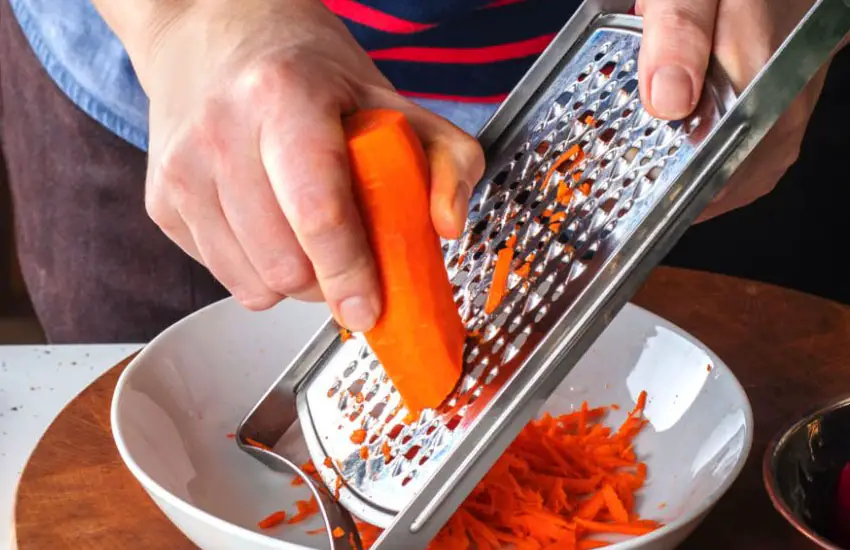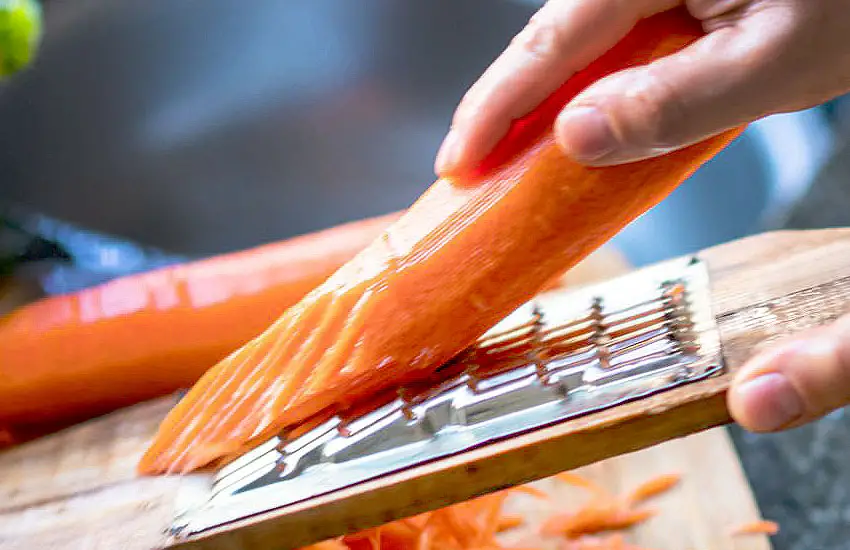As an Amazon Associate, I earn from qualifying purchases at no extra cost to you.
How to Use a Mandoline Slicer to Julienne: Slice & Dice Like a Pro
If you’re curious about making those fancy, thin strips of veggies or fruits for salads, stir-fries, or garnishes, you’re in the right place. A mandoline slicer might sound like a fancy kitchen gadget, but it’s actually quite simple to use, and it can save you a lot of time and effort in the kitchen.
In this article, we’ll walk you through the step-by-step process of using a mandoline slicer to julienne like a pro. We’ll cover everything from choosing the right mandoline slicer to preparing your ingredients and safely operating the slicer to achieve perfect julienned cuts every time.
Whether you’re a seasoned chef looking to streamline your prep work or a kitchen novice eager to explore new culinary techniques, mastering the art of julienning with a mandoline slicer is sure to take your cooking skills to the next level. Let’s dive in and get slicing!

Choosing The Right Mandoline Slicer
If you want to master the art of creating perfectly julienned veggies and fruits, having the right mandoline slicer is essential. Choosing the right mandoline slicer goes beyond just picking the first one you see. You’ll want to consider factors like blade design and adjustable thickness settings to ensure you get the best tool for the job.
Consider The Blade Design
When choosing a mandoline slicer, consider the blade design as it plays a crucial role in creating perfect juliennes. Look for a slicer with sharp, high-quality blades made from durable materials to ensure precise and efficient slicing. Additionally, consider whether the mandoline offers interchangeable blades for versatility in julienning different types of produce.
Look For Adjustable Thickness Settings
Adjustable thickness settings are another important feature to look for in a mandoline slicer. This feature allows you to customize the thickness of the juliennes according to your recipe or personal preference. Having the ability to adjust the thickness ensures that you can achieve uniform juliennes for professional-looking dishes every time.
Safety Measures To Follow
When using a mandoline slicer to julienne your vegetables, it is important to prioritize safety to avoid any accidents or injuries. By following these safety measures, you can confidently prepare beautiful and uniform julienned vegetables without any worries.
Use A Cutting Glove
A cutting glove is an essential safety accessory when using a mandoline slicer. This glove is made of cut-resistant material, protecting your hands from potential injuries. By wearing a cutting glove, you can confidently slide the vegetables along the slicer’s blade, knowing that your hand is well-protected. Make sure to wear it on the hand that is holding the vegetable to ensure maximum safety.
Ensure Stability And Proper Grip
Another crucial aspect of safety while using a mandoline slicer is ensuring stability and a proper grip. The slicer must be placed on a stable surface, such as a cutting board, to prevent it from slipping during use. Additionally, ensure that the slicer’s surface and your hands are dry to maintain a firm grip.
When holding the vegetable, adopt a grip that allows you to firmly control it while keeping your fingers away from the blade. Holding the vegetable at the top, with your fingertips curled under, will allow you to create consistent and safe julienne cuts.
If you find it difficult to maintain stability or control, consider using a safety guard that comes with your mandoline slicer. The safety guard provides an extra layer of protection by keeping your hands away from the sharp blade while still allowing you to achieve perfect juliennes.
Preparing Your Ingredients
To julienne your ingredients effectively, utilize a mandoline slicer. Its precision and efficiency make slicing vegetables an effortless task, resulting in beautifully uniform and delicate cuts for your recipes.
Selecting the Right Produce
To achieve perfect julienned vegetables, it’s crucial to start with the right produce. Look for firm, fresh vegetables that are suited for julienning. Carrots, zucchini, cucumbers, bell peppers, and firm root vegetables like potatoes are excellent choices. Opt for produce that is uniform in shape and size, as this will ensure even cuts and consistent results. Avoid using vegetables that are too soft or excessively curved, as they may not hold up well during the slicing process.
Washing and Peeling Your Ingredients
Before using your mandoline slicer, it’s essential to wash and prepare your vegetables thoroughly. Start by rinsing your produce under running water to remove any visible dirt or debris. Next, use a vegetable brush to scrub the skin gently, removing any residue or bacteria. Remember to peel the skin of vegetables like carrots and potatoes to achieve a clean and polished finished product.
When peeling your vegetables, be mindful of safety. Use a peeler with a comfortable grip and always peel away from your body to avoid accidents. Keep in mind that some vegetables, like zucchini or cucumbers, may not require peeling if their skin is thin and tender. In such cases, you can skip the peeling step altogether and proceed directly to slicing.
Once your vegetables are clean and peeled, pat them dry with a clean kitchen towel or paper towel. Removing excess moisture will help the mandoline slicer make clean and crisp cuts without any slipping or unevenness.
Mastering The Julienne Technique
Mastering the julienne technique on a mandoline slicer allows you to create beautifully uniform strips of vegetables, perfect for salads, stir-fries, and garnishes. In this guide, we’ll walk you through the steps to help you become a pro at using a mandoline slicer for julienning.

Setting Up The Mandoline Slicer
Before beginning the julienning process, it’s important to ensure that your mandoline slicer is set up correctly. Begin by adjusting the cutting blade to the desired thickness, typically around 1/8 inch for julienne cuts, and secure the slicer onto a stable surface. Make sure the julienne blade is inserted and properly aligned with the cutting deck to ensure consistent and precise cuts.
Positioning Your Hands Correctly
When using a mandoline slicer to julienne, it’s crucial to position your hands correctly to avoid any potential accidents. Start by holding the vegetable with a firm grip and using the hand guard to guide it over the blade. Keep your fingers curled under and apply even pressure while maintaining a steady motion to achieve uniform julienne cuts.
Conclusion
Using a mandoline slicer to julienne can be a game-changer in your kitchen. It allows for consistent, professional-looking results with minimal effort. With the right technique and safety precautions, you can create beautiful, uniform julienne cuts with ease. Incorporating this tool into your cooking routine will surely elevate your culinary skills.
